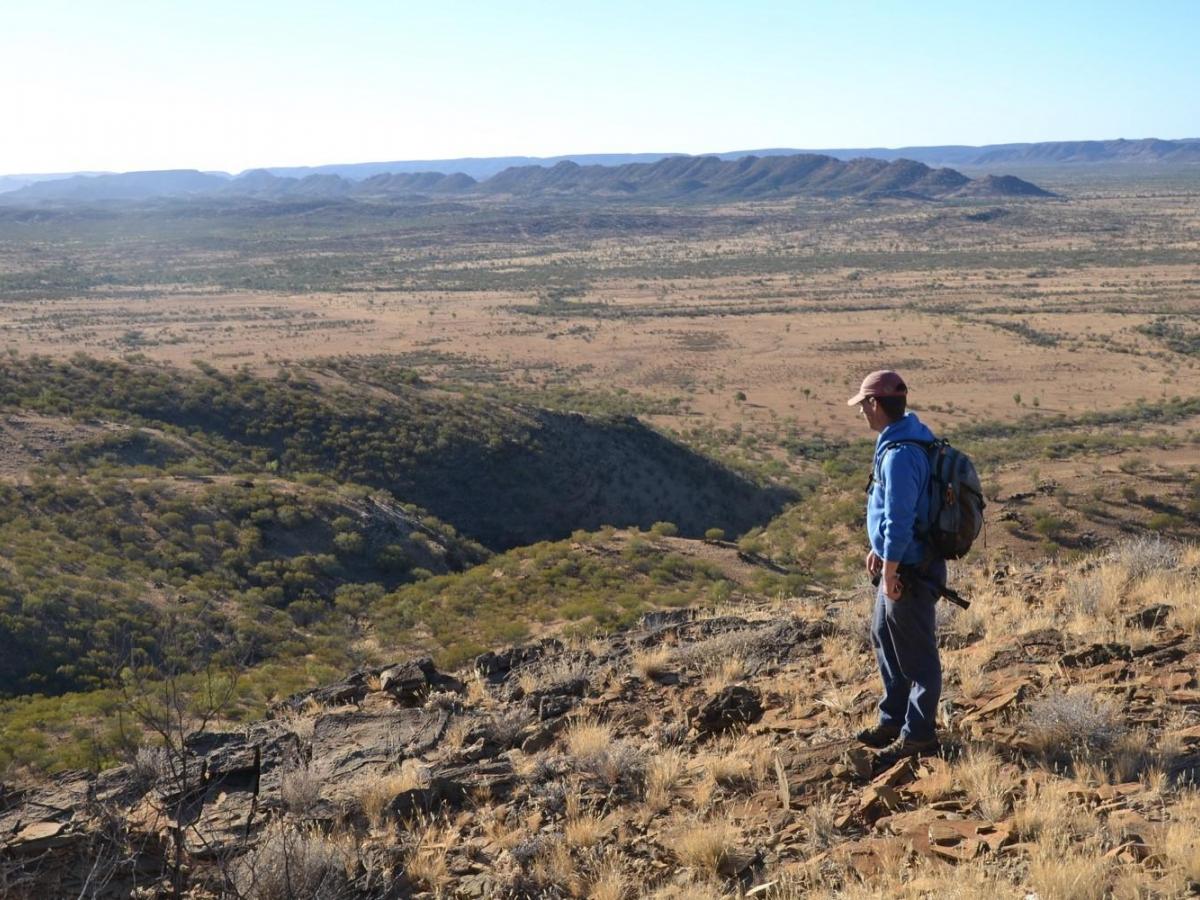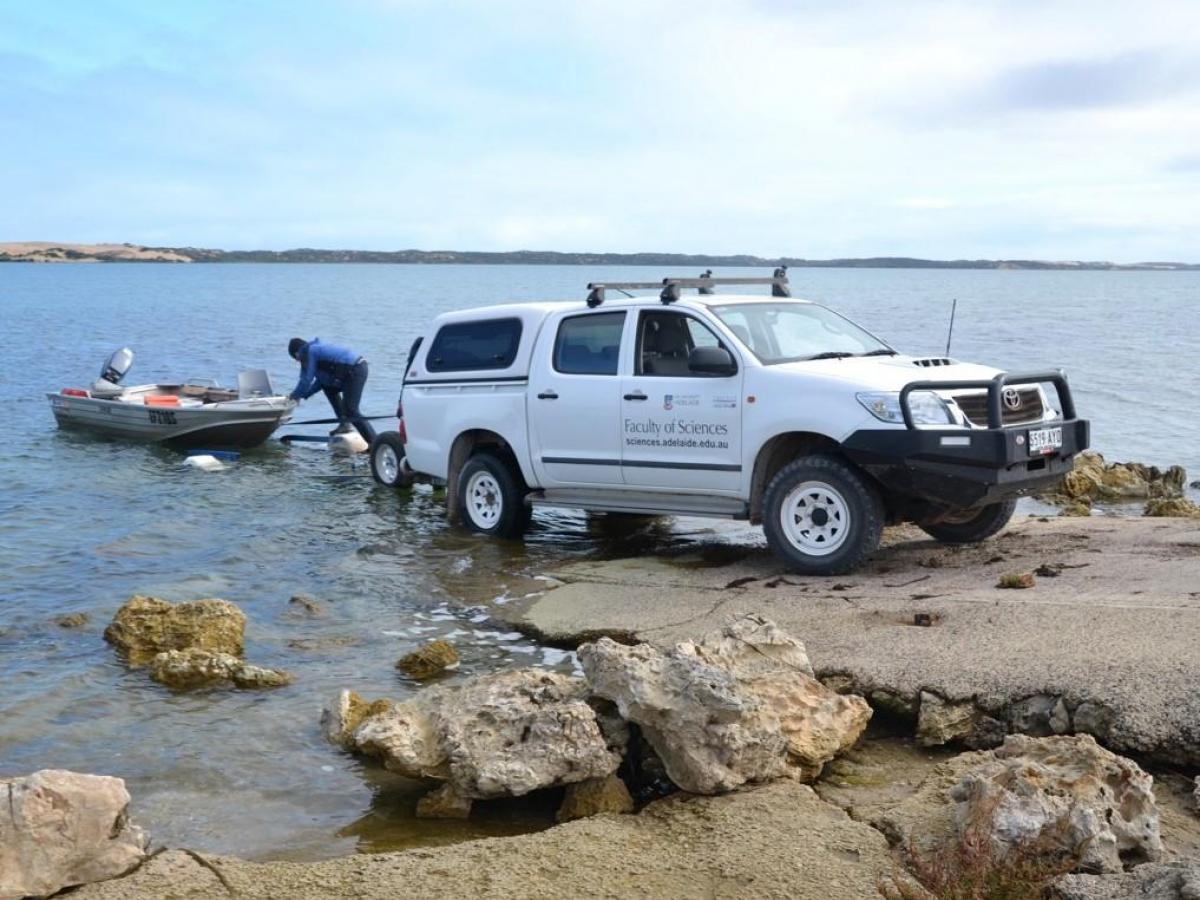Metal Isotope Group
The Metal Isotope Group (MIG) explores the source of metals, and their biogeochemical pathways and interactions between the geosphere and biosphere.

The Limbla Syncline - Amadeus Basin, Central Australia
Image: Juraj Farkas
Our primary research focus is on stable and radiogenic isotope systems of selected metals, and their application to solve problems relevant to earth system evolution studies, geochronology, metallogenesis and environmental issues.
Specifically, we are interested in radiogenic isotope systems of heavy metals (Nd, Pb), and stable isotope systems of alkaline earth metals (Ca, Sr, Mg) and redox-sensitive elements (Cr, Cu, Zn).
The MIG group also investigates novel analytical approaches such as collision cell mass spectrometry. We use this for in-situ dating of selected low-temperature minerals such as glauconite and illite, based on laser-ablation analysis of Rb-Sr and K-Ca isotope systems via plasma mass spectrometry.
Key research areas
- The sources and mixing of waters and dissolved metals in modern coastal systems
- Isotope evolution of seawater over geologic time
- Diagenetic processes in marine carbonates and shales
- Paleodepositional and redox conditions in large sedimentary basins in Australia and Europe
- Novel chemostratigraphy applications and in-situ dating of sedimentary rocks, and more broadly
- Isotope tracing of materials and metal cycling in the Earth’s outer shell

Sampling of waters in the Coorong - North Lagoon.
Environmental applications
- Novel isotope tracing of nutrients and waters in the Coorong lagoon system, South Australia - This project uses traditional (N, C, H, O) and new (Ca, Sr and Ba) isotope tracers to better constrain the external sources and internal cycling of key nutrients, salts and the provenance of local waters in the Coorong Lagoon system. Project Team: Prof. Luke Mosley, Dr. Juraj Farkas, Dr. Jon Tyler, Dr. Stacey Priestley
Funded by: Commonwealth and SA Governments, and facilitated via the Goyder Institute and HCHB Action Plan, Environment SA Project Coorong - Effects of bushfires on the estuarine systems of Kangaroo Island - This project will use selected novel metal isotope tracers to better understand the sources and pathways of heavy metals released during recent bushfires into local soils, streams and estuaries around Kangaroo Island, and their net effects on water quality and marine ecosystem health and fish populations. Specifically, we will use chromium (Cr) and copper (Cu) isotopes to trace toxic metal contaminants sourced from burnt vegetation and CCA (Copper Chrome Arsenate) treated timber; and strontium isotopes (Sr) will be used to quantify local weathering rates and input fluxes of solutes from the land to coastal/estuarine systems. The above geochemical/isotope studies will be complemented by remote sensing imagery to identify the extent and distribution of turbidity/ash plumes on the near-shore estuarine habitats. Project Team: Prof. Bronwyn Gillanders, Prof. Megan Lewis, Dr. Juraj Farkas, Dr. Patrick Reis-Santos, Dr. Judith Giraldo, Dr. Boon Law
Funded by: Department of Environment and Water (DEW) via the Coastal Research & Development Grant Scheme. - Chromium isotope systematics in modern marine environments. Funded by: Environment Institute, Czech Science Foundation

Stromatolitic Reefs in the Ringwood Member (Aralka Formation), Amadeus Basin.
Earth system evolution studies
- Glauconites as novel and directly datable archives of palaeo-seawater evolution across the Ediacaran/Cambrian transition with implications for the timing and environmental triggers of the Cambrian Radiation bio-event. A new ARC Discovery Project (2021-2023)
- Isotope evolution of Phanerozoic seawater based on metal isotope analysis of modern and fossil brachiopods.
Funded by: Base-LiNE Earth project - European Commission, Marie Currie ITN project - Metal isotope chemostratigraphy (Cr, Ca, Mg) and in-situ dating (Rb-Sr, K-Ca) of Proterozoic depositional systems in Australia, including:
- Greater McArthur Basin - funded by ARC Linkage Project
- Amadeus and Warburton Basins - funded with Northern Territory Geological Survey and Santos support
- Paleozoic depositional systems in Europe (Prague Basin and Gotland) - funded via Czech Science Foundation
Mineral and energy resources
- Isotope tracing of ore-forming processes and metal sources in mineralised systems and regolith studies
Funded by: MinEx CRC - Novel isotope approaches on diagenetic processes and fluid/rock interactions in carbonate and shale-hosted hydrocarbon reservoirs
Funded by: MinEx CRC , ARC Linkage - Calibrating metal isotope proxies in modern hydrothermal environments for ancient ore deposit applications
Funded by: ANZIC/IODP
People
-
MIG group members
-
International collaborators
- Professor M Santosh (CUGB, Beijing, China)
- Professor Toni Eisenhauer (GEOMAR, Germany)
- Professor Chris Holmden (Uni Saskatchewan, Canada)
- Dr Thomas Zack (University of Gothenburg, Sweden)
- Professor Stein Jacobsen (Harvard, USA)
- Professor Martin Dietzel (Graz University of Technology, Austria)
- Professor Robert Frei (University of Copenhagen, Denmark)
- Professor Ramananda Chakrabarti (Indian Institute of Science)
- Professor Jiri Fryda (Czech University of Life Sciences, Prague)
- Dr Marin Novak (Czech Geological Survey)
-
MIG facilities
The MIG offers Mawson Analytical Facilities which are available for industry use.
